5 Ways to Fix 'Can't Reach This Page' Error on Microsoft Edge
While a simple restart may fix the problem, there are a few other options to try.
Basic troubleshooting tips
Before implementing any fixes, try these basic troubleshooting tips first.
1. Fix Edge high RAM usage issue
Microsoft Edge sometimes uses a lot of RAM. If possible, check and fix high memory usage on Edge.
2. Clear cache and browsing data
Sometimes, clearing your cache and browsing data can improve your browser's performance.
3. Check with InPrivate window
Try running the website in an InPrivate window. To do this, click the three-dot menu in the upper-right corner of Edge and select New InPrivate Window .
4. Other technical troubleshooting
Another thing you can do is determine if the problem is with a specific website. Confirm this by running other websites in Edge and then loading the same website in another browser or Edge on another device.
If the problem is related to a specific website, one of the following may be true: The website is currently experiencing technical issues, the website's server is down, or the website owner has blocked your IP address or region.
If it's a technical issue with the website - and you'll know this because the site won't load on any device or browser - you can simply wait until the problem is resolved. To rule out the latter, use a VPN or contact the website owner to unblock your IP address.
If the problem occurs with multiple pages on a particular computer, you need to investigate further.
Check Internet connection
If you frequently get the Edge "Can't reach this page" error, it might be your Internet connection. Make sure you're properly connected to the Internet.
One way to do this is to disconnect and reconnect to your Wi-Fi, although it's best to use a wired connection.
You can also determine if the problem is with your Internet by running an Internet speed test. There are a few ways to do this, the easiest being to type 'speed test' into a search engine. Some tools, like Google and Bing, allow you to run the test right in the tool without having to visit a specific website.
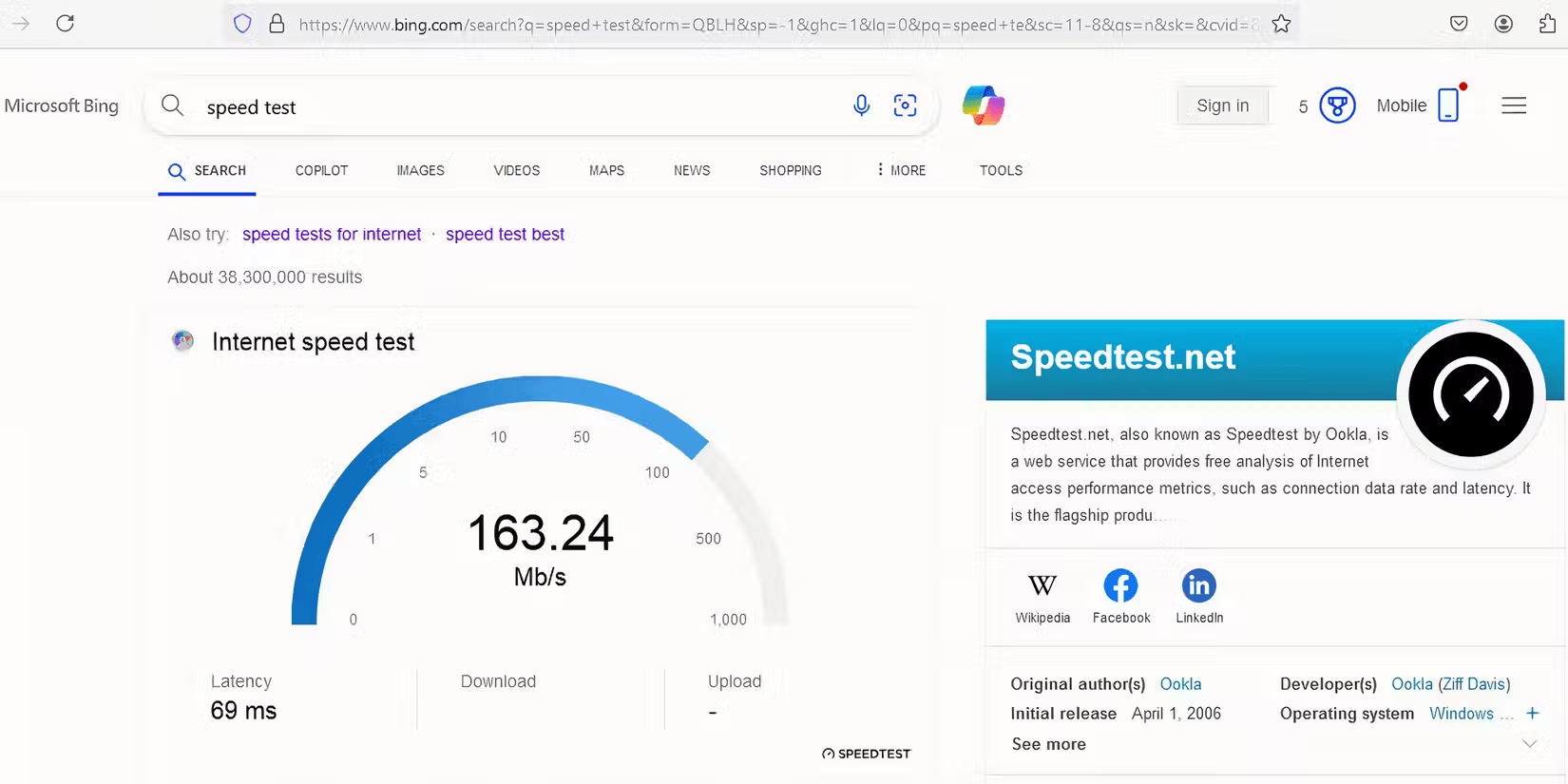
If it's not your internet connection, a network connection issue could be causing Edge to not work properly. Run the troubleshooter to fix Wi-Fi problems on Windows. Apple users whose macOS devices won't connect to Wi-Fi also have options at their disposal.
Change DNS server
Another cause of the Microsoft Edge "Can't reach this page" error could be the way your DNS servers are set up. Changing your DNS servers may fix the problem.
You may be using DNS servers set by your Internet Service Provider (ISP). Changing your DNS servers to ones run by Google or Cloudflare can help and may also speed up your browsing.
While you can use any DNS server you like, the article below will show you how to replace your current DNS with Cloudflare's DNS.
Windows 10
If you are using Windows 10, follow these steps to change your DNS:

- Scroll to find and click Network and Sharing Center .
- In the left sidebar, click Change adapter settings .
- Right-click on your preferred network connection and go to Properties of that connection.
- In the Networking tab , look for Internet Protocol Version 4 (TCP/IPv4) and double-click it.
- Check the circle to use the following DNS server address.
- Enter '1.1.1.1' and '1.0.0.1' in the Preferred DNS and Alternate DNS fields .
Windows 11
If you're using Windows 11, here's how to change your DNS:
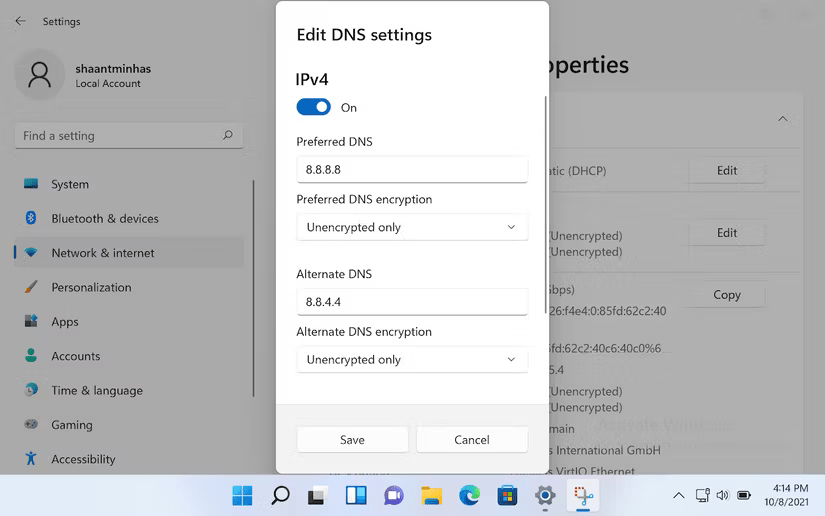
- Click Hardware properties .
- Find the DNS option and click the Edit button associated with that option.
- Enable IPv4 and enter '1.1.1.1' and '1.0.0.1' in the Preferred DNS and Alternate DNS fields .
Here are the primary and alternate DNS settings from Cloudflare, Google, and OpenDNS that you can use for your new DNS server:
- Cloudflare: 1.1.1.1 and 1.0.0.1
- Google: 8.8.8.8 and 8.8.4.4
- OpenDNS: 208.67.222.222 and 208.67.220.220
Check if these DNS settings help fix the Edge error.
Disable IPv6
IPv4 (32-bit) and IPv6 (128-bit) are the two main types of IP addresses available. When you connect to a website, your browser will first look for an IPV6 address. If this is not available, the browser will use an IPv4 address. While IPv6 is faster than IPv4 when IPv6 is not available, it can cause lag and crash your Edge browser, so the debate over whether you should use IPv4 or IPv6 continues.
To disable IPv6 on Windows 11, follow these steps:
- Press Windows + I to open the Windows Settings app.
- Click Network & Internet .
- In the left pane, click Wi-Fi (if connected wirelessly) or Ethernet (if plugged in).
- Select Hardware properties .
- Now, next to IP Assignment , select Edit > Manual , then disable IPv6.
On Windows 10, follow steps 1 through 3 above before doing the following:
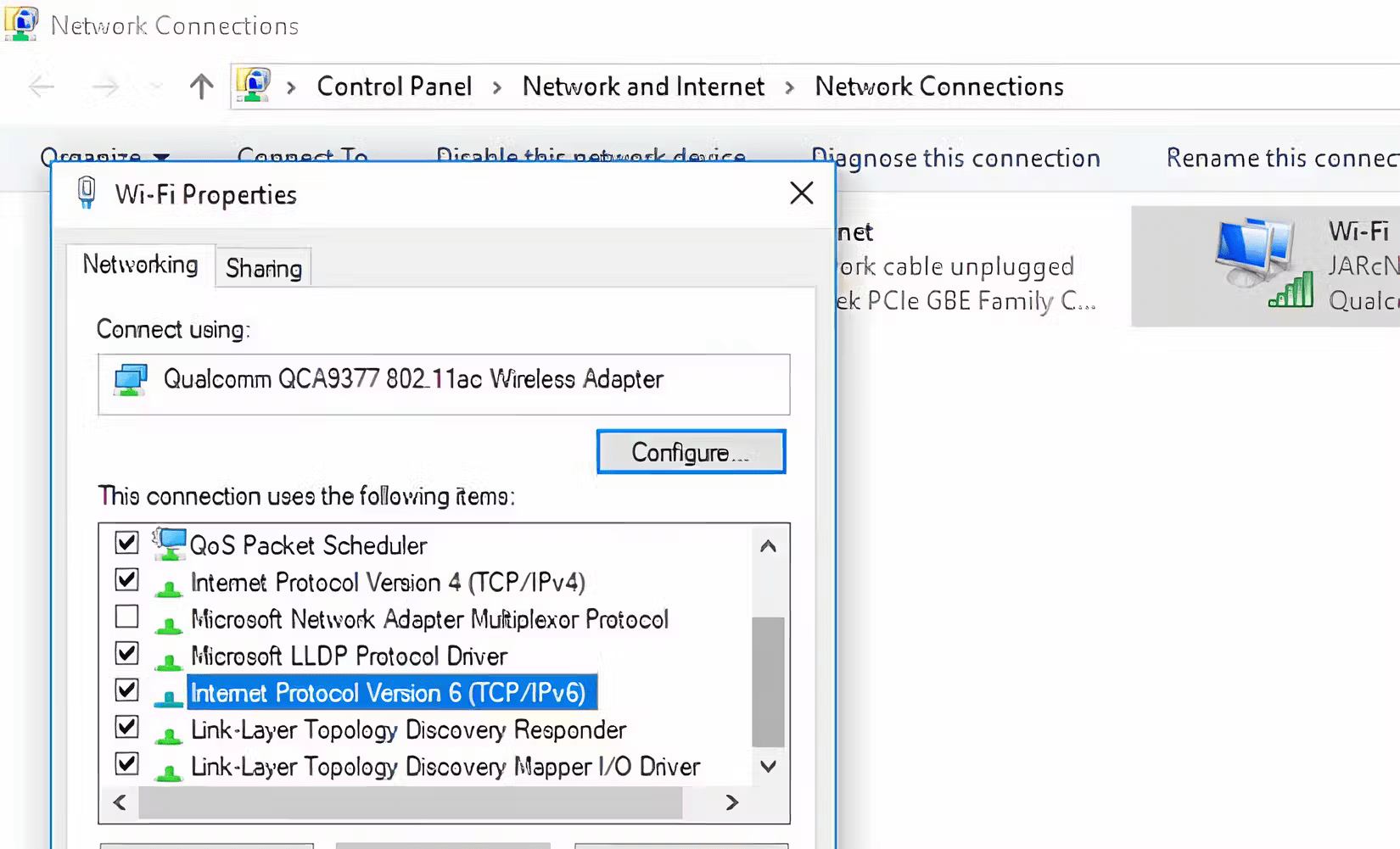
- Click Network and Sharing Center .
- On the left sidebar, click Change adapter settings .
- Right click on your network connection and go to Properties .
- In the Networking tab , uncheck the Internet Protocol Version 6 (TCP/IPV6) box .
- Click OK to apply the changes.
You can also disable IPv6 on macOS devices. In fact, the process is simpler on a Mac.
Once IPv6 is disabled, restart Edge and connect to the offending site to verify if the issue is resolved.
Disable Microsoft Edge extensions
Try disabling all browser extensions, also known as Microsoft Edge Add-ons, especially ad blockers or any extensions that directly interfere with browser scripting.
Here's how to disable add-ons on Edge:
- In Microsoft's Edge browser, click the three-dot menu button.
- Click on Extensions and select Manage extensions .
- Disable any or all extensions you want to disable.
Browser extensions use computer resources and can even take up network bandwidth, affecting your Internet connection and browser performance.
Reset Microsoft Edge
Finally, reset Microsoft Edge to return all settings to default. Here's how:
- Open Microsoft Edge and click the three-dot menu in the upper-right corner.
- Click Settings in the drop-down menu.
- On the sidebar, select Reset Settings .
- Click Restore settings to their default values .
- Click Reset in the pop-up window.
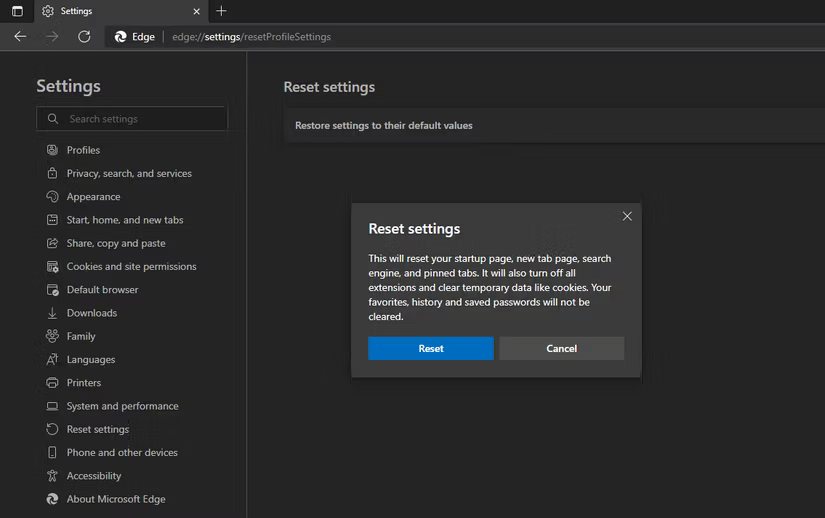
Restoring your browser settings to their defaults usually fixes most problems. Restart Edge to see if you can now access the page. However, if you're still getting the Edge "Can't reach this page" error, it's best to switch to a different browser.
It can be hard to switch away from Microsoft's browser if you're a diehard Edge fan, but there are other options you might find useful. Firefox offers privacy-focused support, as do DuckDuckGo and Tor, while Opera and Chrome are good options. There are also plenty of AI-powered web browsers out there.
You should read it
- Instructions for restoring Microsoft Edge on Windows 10
- How to color PDF documents on Microsoft Edge
- Fix Microsoft Edge using RAM on Windows 10
- Microsoft Edge is about to add a series of features to support remote work and enhance security
- Microsoft Edge is about to integrate YouTube with the Discover feature, promising many interesting experiences
- Manage and delete browsing data on Microsoft Edge
- How to allow Pop-Up window to be displayed in Microsoft Edge
- New Edge is very similar to Chrome, so is there any reason to switch from Chrome to Edge?
- Microsoft encourages users to develop extensions for Edge Chromium
- Edge Chromium is adding many useful new features
- How to block hateful ads on Microsoft Edge browser
- Steps to adjust security settings in Microsoft Edge
May be interested

Ways to Save Money When Upgrading Your PC

Norway becomes the first country to have more electric cars than gasoline cars, why?

How to Convert Files and Folders to ISO on Windows

How to Use Chrome Remote Desktop to Control Your PC from Anywhere

3 main disadvantages of using ultra-wide monitors for gaming

3 beat making apps on smartphones
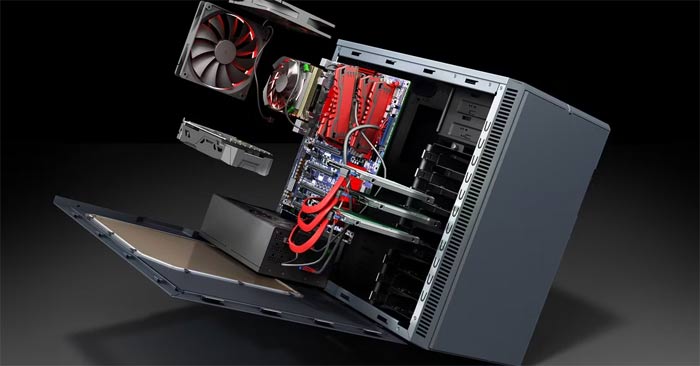

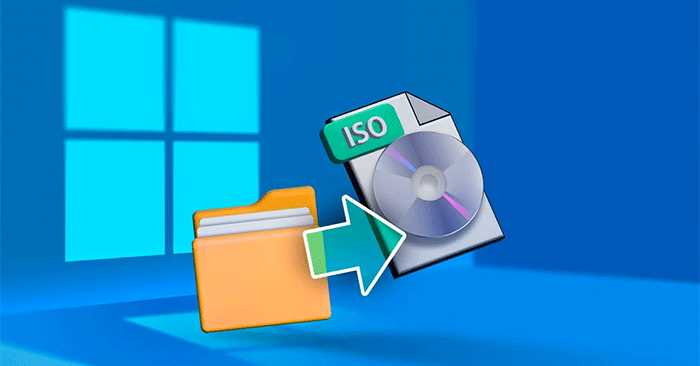



 How to Fix 'Can't Reach This Page' Error on Microsoft Edge
How to Fix 'Can't Reach This Page' Error on Microsoft Edge Instructions for customizing the New Tab page on Microsoft Edge
Instructions for customizing the New Tab page on Microsoft Edge How to save Microsoft Edge website as a PDF file
How to save Microsoft Edge website as a PDF file Why does a web page on Edge spawn many Windows processes?
Why does a web page on Edge spawn many Windows processes? UXSS bug on Microsoft Edge allows hackers to steal user information
UXSS bug on Microsoft Edge allows hackers to steal user information How to take a screenshot of the entire web page on Microsoft Edge
How to take a screenshot of the entire web page on Microsoft Edge